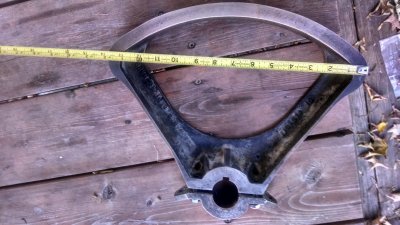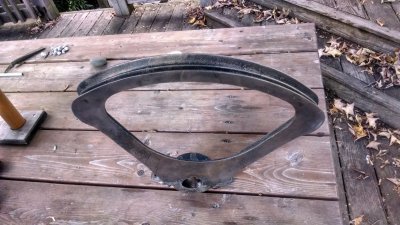Steering quadrant back on!
The quadrant is back on - pretty straight-forward except for one final "issue."
I have the Orion steering set up.
The sheathed cables both terminate on the port side at an aluminum plate apparatus which extends athwart ship at the bottom fore-edge of the helm-locker.
The wire ropes then extend to the quadrant as follows:
The cable that attaches to the starboard side of the quadrant wraps in a groove around the arc of the quadrant to an anchoring eye-bolt on the starboard side. Simple.
However, the cable that attaches to the port side of the quadrant first runs athwart ship to a horizontal sheave incorporated into the aluminum-plate apparatus over on the starboard side, takes a 180 degree turn around this sheave, and thence back around the arc in a separate groove to an anchoring eyebolt on the port side.
Here's the "issue:"
It is critical that the cable gets relocated back onto that sheave!
it will fall off of it when you un-anchor the cable eye-bolts to remove the quadrant.
Since all of this is out of sight and - again! - virtually out of reach, you have to work all this out by the "eyeballs" on your fingertips.
I ended up laying the cable into the sheave and holding it there with blue masking-tape until I could re-anchor the cable eye-bolts.
It takes all four of your arms to hold the cable in the groove of the sheave, hold the cable in the groove of the quadrant arc, and install and snug up the nuts on the anchoring eye-bolt.
Blue tape makes it possible, and easily tears away when the job is done.
One other tip: before you remove the quadrant, run a "sharpie" around the rudder-shaft right at the top surface of the quadrant, so you have a mark showing you where to reset the quadrant.
Re-tension the steering cables to just a hint of slack, and remember to tighten the locking-nuts on the anchoring eye-bolts.
Just need to give it a sea trial, and then cover everything back up.
And Jeff - I used TEF-GEL at every aluminum/steel interface - good suggestion.
Chris



